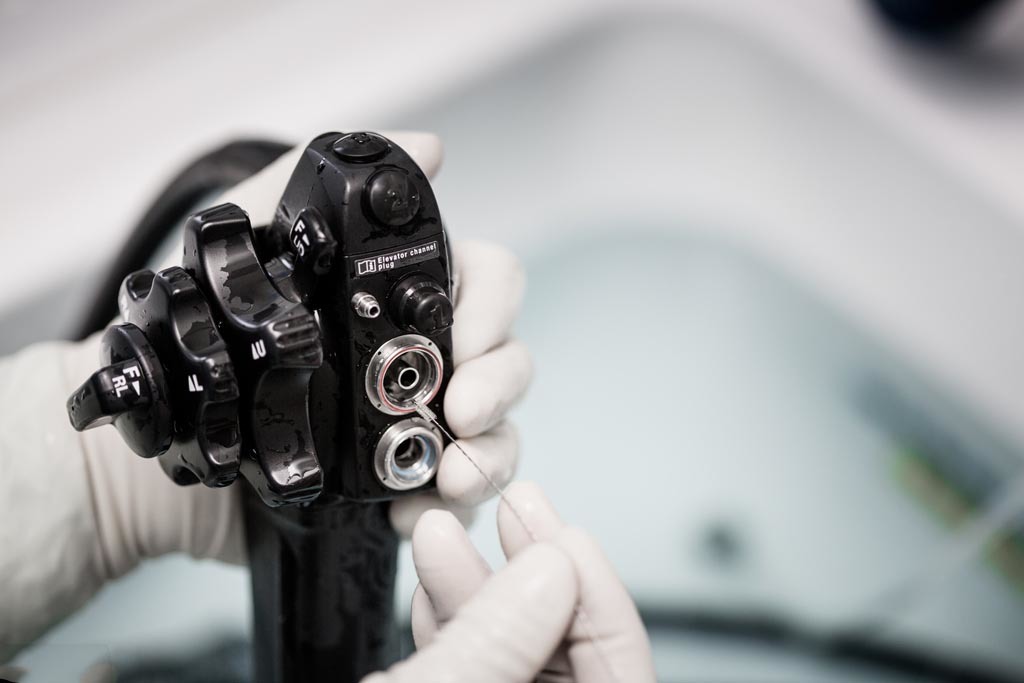The journey of precision maintenance and renewal for endoscopes
2025/07/05
In the medical field, endoscopes are like a doctor's "second pair of eyes," allowing them to reach deep into the body's cavities and provide a high-definition view for diagnosis and treatment. However, after prolonged use, endoscopes inevitably experience issues such as leaks, blurry images, or mechanical malfunctions. When equipment requires maintenance, professional engineers use a rigorous and meticulous process to give these precision instruments a "second life."

Step One: Comprehensive Health Assessment
Repair begins with a "full body check" of the equipment. Engineers simulate clinical operations, testing the image clarity of the lens, the brightness of the light guide, and the flexibility of the bending section, and checking for any potential water leaks. Like a doctor's consultation, they use professional instruments to detect electrical signals and optical systems, precisely locating the "lesion"—which could be a scratch on the lens, a broken fiber optic, or an aging seal.
Step Two: Gentle Deep Cleaning
The endoscope needs to be completely disassembled (more accurately, "carefully processed step-by-step") to its smallest units. In a super-clean workbench, engineers gently separate the lens body, light guide, and operating handle using specialized tools, avoiding damage to the delicate structure. Each fiber optic and each lens group must be soaked in enzymatic solution and ultrasonically cleaned to thoroughly remove biological residues and contaminants, ensuring a sterile state.
Core Maintenance Steps:
Optical System Renewal
If the lens is blurry or scratched, engineers will replace it with a high-transmittance optical lens and use nitrogen to blow away dust; broken optical fibers are reconnected using splicing technology to restore light transmission efficiency.
Seal Reconstruction
Aged or deformed rubber seals are replaced with medical-grade silicone components, and pressure tests are conducted in a simulated cavity to ensure complete waterproofing; biocompatible lubricant is applied to metal joints, allowing the bending section to regain smooth rotation.
Electronic System Repair
Damaged circuit boards are repaired using microsoldering techniques, and the image processor is upgraded if necessary; cable interfaces are reinforced to prevent signal interruptions caused by poor contact.
Step Three: Rebirth Verification
After assembly, the endoscope must undergo three "tests":
Mechanical test: Bending angle reaches 210°, with sensitive torque feedback;
Optical calibration: Resolution test card verifies image sharpness, and a color difference meter checks color reproduction;
Seal test: Immersed in a 40℃ water bath under pressure to ensure no leakage for 72 hours.
Step Four: Preventive Maintenance Suggestions
The maintenance team will create a "health record" for each device and provide maintenance guidelines:
Pre-treat immediately after operation with a multi-enzyme cleaning agent;
Avoid sharp bending of the lens body, and use a support stand for storage;
Perform airtightness tests every six months to prevent problems before they occur.
Conclusion: The Significance Behind Repair
Endoscope repair is not just technical restoration, but also a cherishing of medical resources. A professionally maintained device can extend its lifespan by 5-8 years, at a cost of only 30% of a new device. More importantly, it ensures the safety of subsequent patient examinations—each precise "renewal journey" continues the reliability of life-saving diagnosis and treatment.
(Trivia: Globally, only about 20% of hospitals have the ability to perform independent repairs, with most relying on original manufacturers or ISO-certified third-party institutions. Choosing a professional team is a serious commitment to patient safety.)
MORE NEWS



